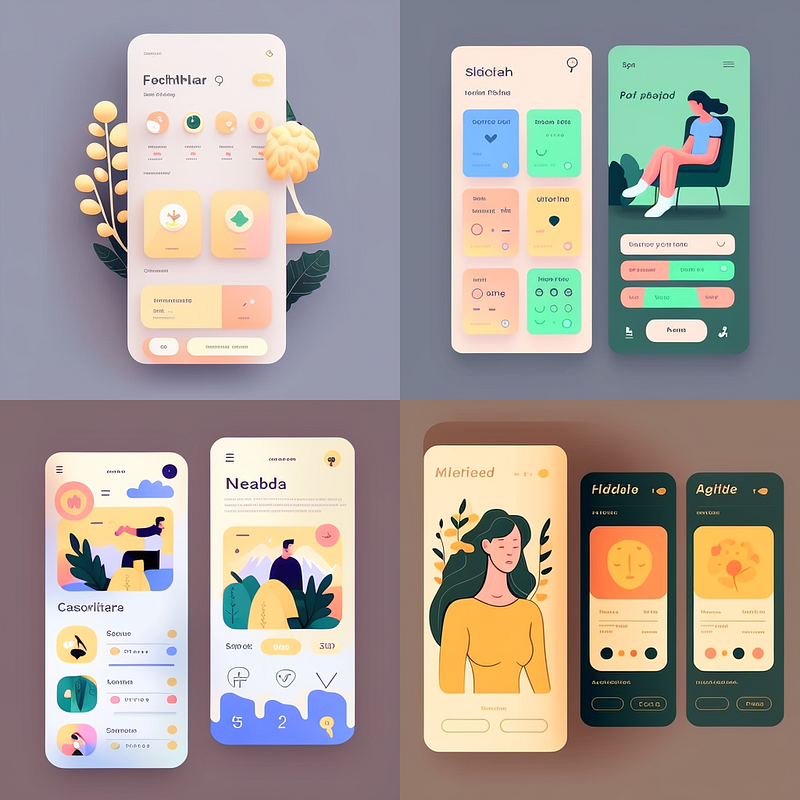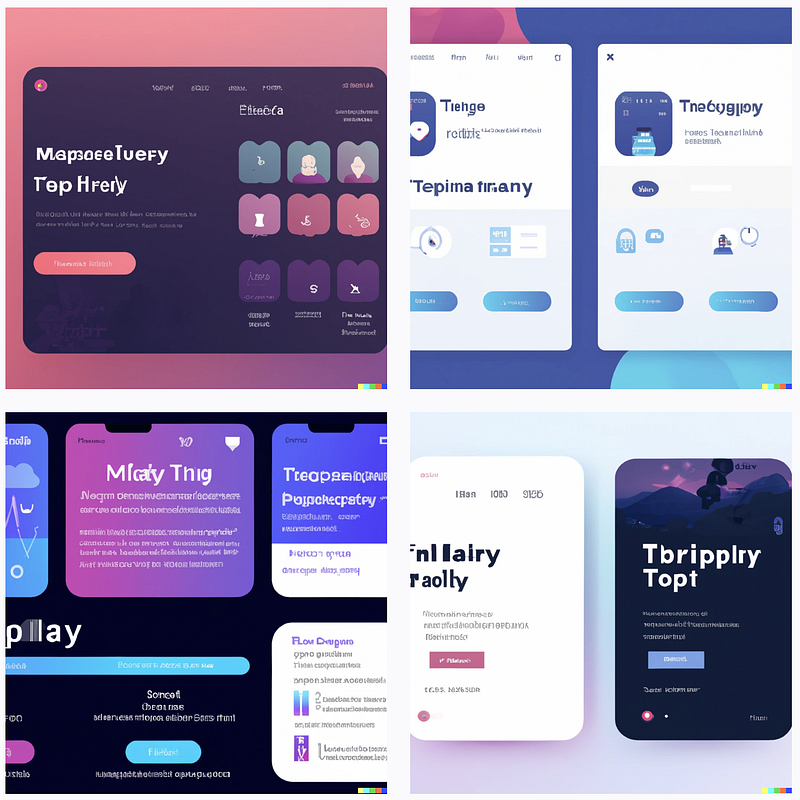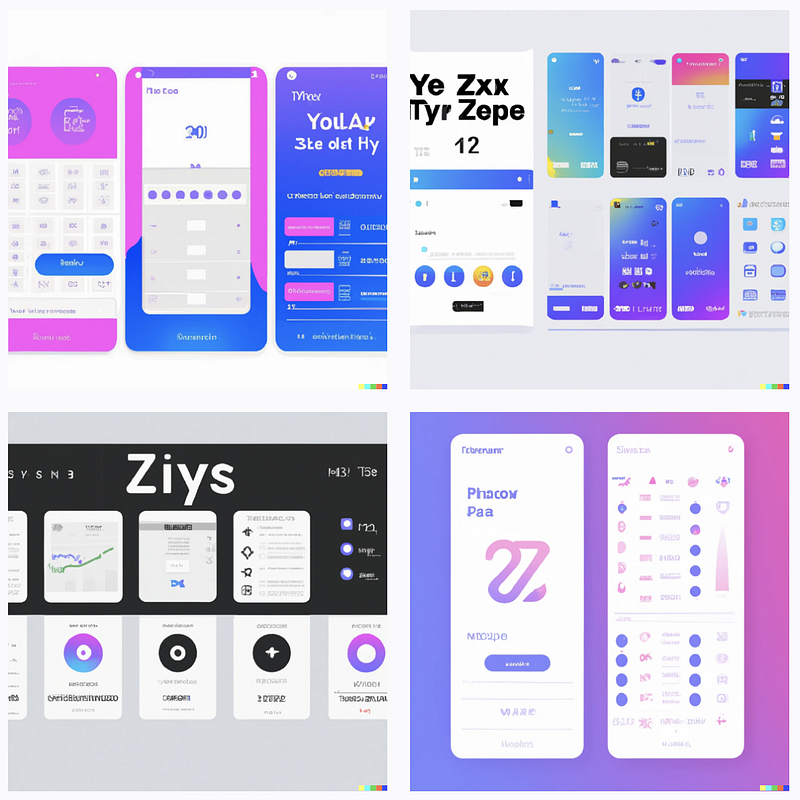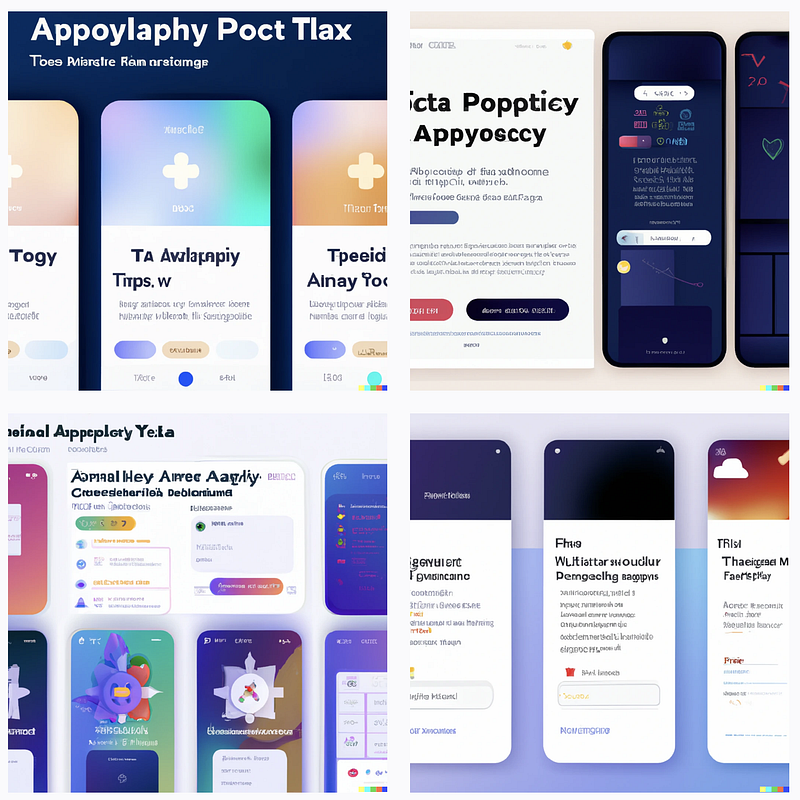Midjourney vs DALL·E: The Ultimate AI Showdown for UI Design
Written on
AI's Role in UI Design
Can artificial intelligence truly handle UI design tasks?
Absolutely! The latest advancements in text-to-image (T2I) AI technology allow for image generation directly from text prompts. This capability means that AI can indeed assist in creating UI designs when given the right instructions. At the very least, it can serve as a source of inspiration for designers.
What about the realm of UX design?
Unfortunately, T2I AI systems are primarily focused on image generation, making them less effective for producing quality UX work. While the generated images may adhere to good UX principles (since they draw from existing designs), relying solely on these outputs is a gamble. It's always best to apply your own understanding of UX principles when designing interfaces. However, AI can still aid in UX design; tools like ChatGPT can provide insights and feedback on user experience. I will delve into utilizing ChatGPT for UX design in an upcoming article.
Exploring AI Options
The two T2I platforms under scrutiny here are Midjourney and DALL·E 2. Although they share a similar foundation, they were created by different developers. Midjourney is known for its robust model and subscription pricing, while DALL·E 2, developed by OpenAI and backed by Microsoft, operates on a credit-based system, charging per prompt. Let's dive into a comparison!
Prompting Techniques
Experimentation is crucial when working with T2I technology (which is why I prefer Midjourney over DALL·E), as there is no universally optimal prompting method. Although I can't provide a definitive answer, I can share some insights I've gathered.
There are two main prompting formats:
- Sentence format: Similar to how you would describe the design to a peer. For instance: "The user interface of a therapy app designed in Figma with a flat vector style, trending on Dribbble."
- Tokenized format: This method lists the elements you want in your image. For example: "therapy app, flat vector, Figma, Dribbble, user interface."
In general, the tokenized format tends to yield better results, as it eliminates unnecessary words that may confuse the model. Nonetheless, the sentence format can be useful for clarifying relationships among terms.
Let’s evaluate both formats with a few tips to compare Midjourney and DALL·E 2.
Round 1: Sentence-based Prompting
For our initial test, we will employ the sentence-based approach.
Prompt: "therapy app, flat vector, Figma, Dribbble, user interface, Behance, tech, clean, 2022, best of app store, award-winning design"


Analysis of Round 1
Midjourney decisively outperformed DALL·E 2 in this round. While some details in the Midjourney images were less polished, they still presented a coherent design. On the other hand, DALL·E 2's outputs were somewhat underwhelming. I often apply the "squint test" when assessing AI-generated designs: if I squint my eyes or unfocus my vision, can I envision this in its intended context? For me, the Midjourney results looked like they belonged in my Dribbble feed, a feat DALL·E 2 failed to achieve. Midjourney takes the win for this round!
Round 2: Tokenized Format
In our second round, we will utilize the tokenized format and add more descriptors to align the results with my vision.
Prompt: "therapy app, flat vector, Figma, Dribbble, user interface, Behance, tech, clean, 2022, best of app store, award-winning design, blue and white color scheme"


Analysis of Round 2
This round showcased a tighter competition with both models performing reasonably well on the squint test; however, Midjourney maintained its edge. Its outputs were visually appealing and could genuinely inspire your UI projects, providing excellent color schemes and artistic elements. Thus, Midjourney wins again!
Round 3: The Chris Lüders Special
In this final round, we’ll utilize a prompt inspired by renowned UX designer Chris Lüders, which utilizes the tokenized format effectively:
Prompt: "high-resolution interface, [XYZ]-themed application interface, UI design, mobile app, iPhone, iOS, Apple Design Award, usability, single screen, flat colors, Helvetica, native app, design, user interface, Figma, Apple Store, Dribbble."


Additional Test with Therapy Theme
Let’s replace [XYZ] with "therapy" to see the impact.


Analysis of Round 3
This round was a clear victory for Midjourney, which delivered stunning results that could serve as fantastic inspiration for your next UI project. Interestingly, I found the [XYZ]-themed designs to be even more inspiring than the therapy-themed ones. This suggests that sometimes a broader approach can yield better outcomes. Nonetheless, the therapy-themed prompt did provide more relevant inspiration when specifically focused on that niche. Midjourney is the clear winner for this round.
The Final Verdict
In every round, Midjourney significantly outperformed DALL·E 2. If you're interested in using Midjourney, you can refer to their quick start guide. For DALL·E 2, you can find more information here.
Thank you for reading! Please share any tips you have for using Midjourney in UI/UX design. I would love to learn more from your experiences. If there's anything else you'd like me to explore, feel free to leave a comment. If you enjoyed this article, consider following my profile, clapping, or sharing your thoughts. Every bit helps to reach more readers!
A detailed comparison of Midjourney and DALL·E using the same prompts to evaluate their performance.
An analysis of which AI image generator stands out in the realm of UI design.